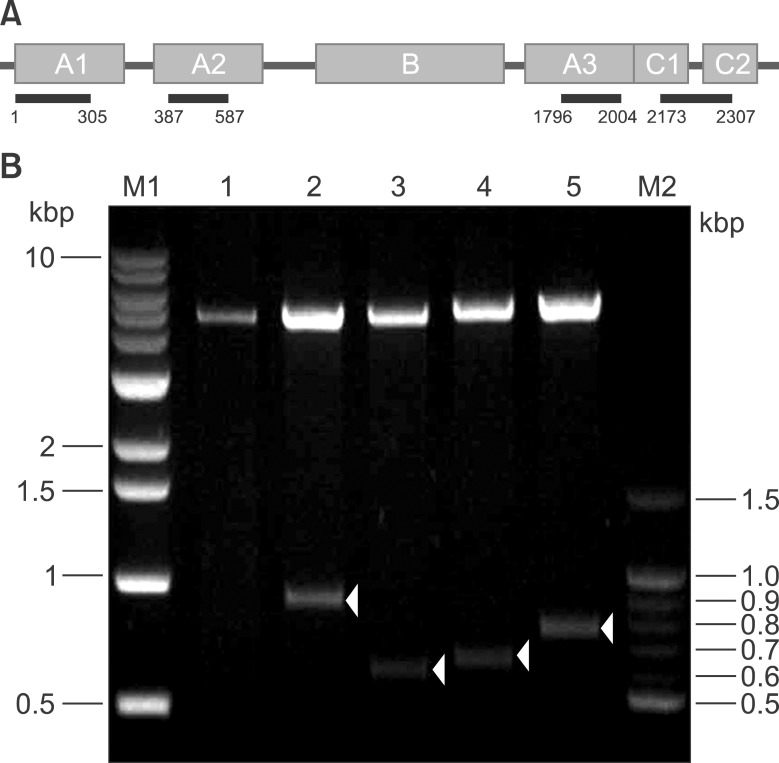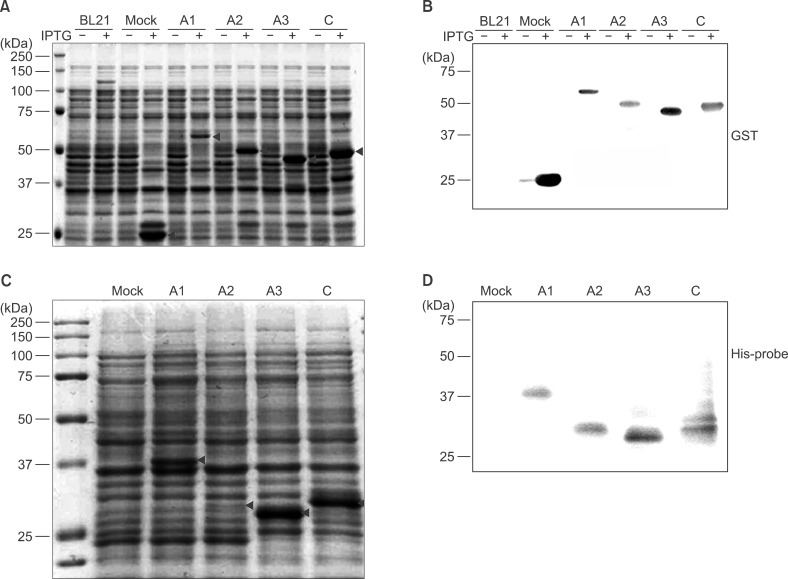1. Björkman S, Carlsson M, Berntorp E, Stenberg P. Pharmacokinetics of factor VIII in humans. Obtaining clinically relevant data from comparative studies. Clin Pharmacokinet. 1992; 22:385–395. PMID:
1505144.
2. Bowen DJ. Haemophilia A and haemophilia B: molecular insights. Mol Pathol. 2002; 55:127–144. PMID:
11950963.

3. Pipe SW, Kaufman RJ. Factor VIII C2 domain missense mutations exhibit defective trafficking of biologically functional proteins. J Biol Chem. 1996; 271:25671–25676. PMID:
8810344.

4. Fang H, Wang L, Wang H. The protein structure and effect of factor VIII. Thromb Res. 2007; 119:1–13. PMID:
16487577.

5. Lenting PJ, van Mourik JA, Mertens K. The life cycle of coagulation factor VIII in view of its structure and function. Blood. 1998; 92:3983–3996. PMID:
9834200.

6. De Brasi CD, Slavutsky IR, Larripa IB. Molecular genetics of hemophilia A. Medicina (B Aires). 1996; 56:509–517. PMID:
9239887.
7. Miners AH, Sabin CA, Tolley KH, Lee CA. The changing patterns of factor VIII (FVIII) and factor IX (FIX) clotting factor usage in a comprehensive care centre between 1980 and 1994. Haemophilia. 1998; 4:4–9. PMID:
9873858.

8. van't Veer C, Hackeng TM, Delahaye C, Sixma JJ, Bouma BN. Activated factor X and thrombin formation triggered by tissue factor on endothelial cell matrix in a flow model: effect of the tissue factor pathway inhibitor. Blood. 1994; 84:1132–1142. PMID:
8049429.
9. Pipe SW. Functional roles of the factor VIII B domain. Haemophilia. 2009; 15:1187–1196. PMID:
19473417.

10. Pipe SW, Morris JA, Shah J, Kaufman RJ. Differential interaction of coagulation factor VIII and factor V with protein chaperones calnexin and calreticulin. J Biol Chem. 1998; 273:8537–8544. PMID:
9525969.

11. Hwang SH, Kim MJ, Lim JA, Kim HC, Kim HS. Profiling of factor VIII mutations in Korean haemophilia A. Haemophilia. 2009; 15:1311–1317. PMID:
19719548.
12. Seo JY, Jang MA, Kim HJ, Lee KO, Kim SH, Kim HJ. Sequence variation data of F8 and F9 genes in functionally validated control individuals: implications on the molecular diagnosis of hemophilia. Blood Res. 2013; 48:206–210. PMID:
24086941.
13. Hwang SH, Lim JA, Kim MJ, et al. Profiling of differentially expressed genes in haemophilia A with inhibitor. Haemophilia. 2012; 18:e247–e253. PMID:
22176207.

14. Lollar P, Parker CG. Subunit structure of thrombin-activated porcine factor VIII. Biochemistry. 1989; 28:666–674. PMID:
2496750.

15. Davidson CJ, Hirt RP, Lal K, et al. Molecular evolution of the vertebrate blood coagulation network. Thromb Haemost. 2003; 89:420–428. PMID:
12624623.

16. Hoffman M, Monroe DM 3rd, Roberts HR. Activated factor VII activates factors IX and X on the surface of activated platelets: thoughts on the mechanism of action of high-dose activated factor VII. Blood Coagul Fibrinolysis. 1998; 9(Suppl 1):S61–S65. PMID:
9819030.
17. Kappelmayer J, Bernabei A, Edmunds LH Jr, Edgington TS, Colman RW. Tissue factor is expressed on monocytes during simulated extracorporeal circulation. Circ Res. 1993; 72:1075–1081. PMID:
8097439.

18. Rickles FR, Hair GA, Zeff RA, Lee E, Bona RD. Tissue factor expression in human leukocytes and tumor cells. Thromb Haemost. 1995; 74:391–395. PMID:
8578492.

19. Shih YP, Kung WM, Chen JC, Yeh CH, Wang AH, Wang TF. High-throughput screening of soluble recombinant proteins. Protein Sci. 2002; 11:1714–1719. PMID:
12070324.








 PDF
PDF ePub
ePub Citation
Citation Print
Print



 XML Download
XML Download